
The sensor sizes are similar, 1/2.5" versus 1/2.3", but the former does have OIS (Optical Image Stabilisation), which is a significant advantage. It should be noted, in fact, that the Lumia 930 and 1520 output from their main camera sensor, by default, at 5MP, using oversampling to reduce noise and improve quality. For the comparison here, I've eschewed this and looked at the bare 16MP output, so that I can compare 'like with like' in the AAWP interactive comparator.
It does surprise me that few other manufacturers have attempted oversampling from these high megapixel sensors - what IS the point in 16 or 20MP images? Most people will be viewing the photos on something at 1080p, or perhaps at the VERY most, a 4K video display, and even that can't get close to reproducing every pixel in a 16/20MP photo. Yes, having more megapixels does give room for cropping, but given the choice, I think more people would say yes to the PureView idea of using all that data to produce a cleaner, 'purer' low megapixel version, and 5MP seems about right.
Anyway, on with the tests. For the Lumia 930, I used the new Lumia Camera 5 capture software, which proves almost as fast as HTC's offering and with more after-the-fact bells and whistles, especially if you turn on the Rich Capture. For the HTC One M9, I used the very latest firmware and application updates. Note that most camera reviews of the M9 on other sites were using inferior/earlier firmware. This whole feature is in the context of both the controversial image processing changes made by Microsoft for Lumia Camera 5 and of the criticism of the M9's camera as having poor image processing - my impression is that the former is validated and the latter is disproved - quality here is certainly up with the other Android flagships I've tested like the Z3 and OnePlus One.
The crops below are all at 1:1 as usual. I've deliberately put in an emphasis on tricky subjects or conditions, to push the camera phones to the limit.
| Note that the interactive comparator below uses javascript and does need to load each pair of images. Please be patient while this page loads, if you see a pair of images above each other than you've either not waited long enough or your browser isn't capable enough! |
Test 1: Landscape, sunny, HDR allowed
In suburbia, during a rare sunny moment (this week). Here's the overall scene, for context:
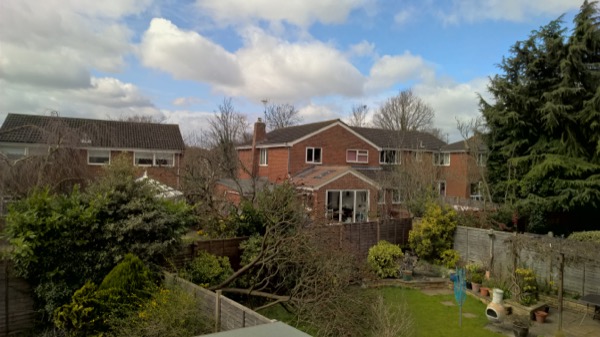
In case you want to grab the original images to do your own analysis, here they are, from the Lumia 930 and HTC One M9, click the links to download. And here are detailed 1:1 crops, just wait to make sure the page has fully loaded and then use your mouse or trackpad pointer to compare the images:
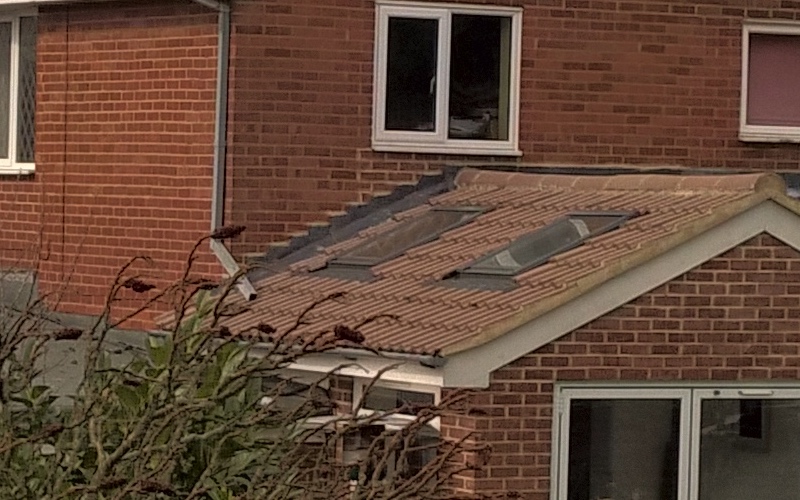

There's certainly more natural texture in the 930's photo, though considering that the HTC One M9 lacks OIS, professional optics and Microsoft/Nokia's expertise in image processing then the M9's photo isn't that bad. This is in good light, mind you, and with HDR turned on for both phones. We obviously need to start challenging the devices more in order to see real differences.
Test 2: Macro, sunny, no HDR
Again, with the (rare) sun out, a valentine's heart, with plenty of texture. Here's the overall scene, for context:

In case you want to grab the original images to do your own analysis, here they are, from the Lumia 930 and HTC One M9, click the links to download. And here are detailed 1:1 crops, just wait to make sure the page has fully loaded and then use your mouse or trackpad pointer to compare the images:
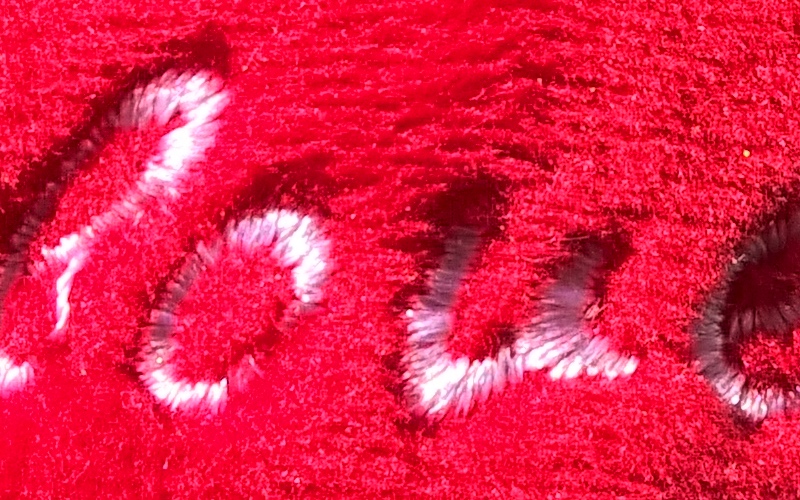
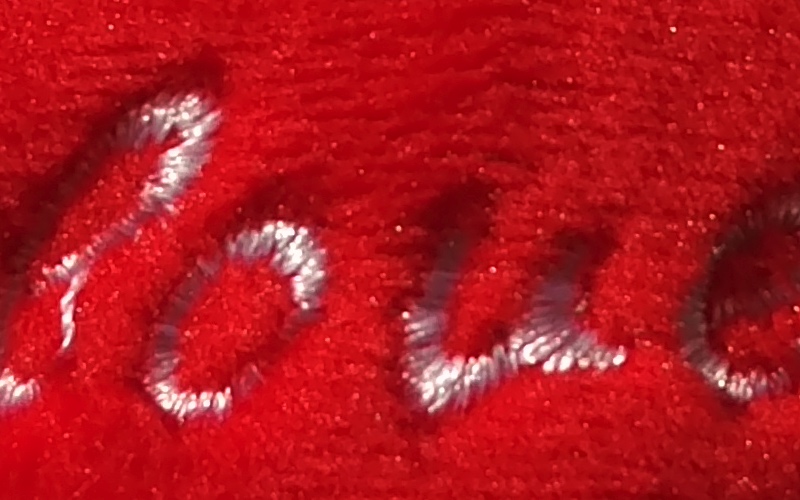
I'm going to give this one to the M9, in fact, with richer colours, better texture, and less overblown bright detail. A compliment to its algorithms all round and a surprise, given the 930's capabilities and reputation.
Test 3: Shooting into light, sunny, HDR allowed
The sun wasn't fully out, but I was shooting in its direction through some spring blossom. Here's the overall scene, for context:

In case you want to grab the original images to do your own analysis, here they are, from the Lumia 930 and HTC One M9, click the links to download. And here are detailed 1:1 crops, just wait to make sure the page has fully loaded and then use your mouse or trackpad pointer to compare the images:


There's little to choose between the two photos, to be honest, other than a slight colour difference (the 930 gets it right) - with the breeze in the leaves moving things slightly between the HDR bracketed shots, there's very slight ghosting down here at the pixel level if you look closely enough. I'd give the nod to the 930 but as you can see there's some unpleasant white digital artefacts at a bright point in the image (near the bottom-right of the crop), so I'm going to call it even overall.
Test 4: Indoors, adequate artificial light
A supermarket shelf, shot from 2 metres. Here's the overall scene, for context:

In case you want to grab the original images to do your own analysis, here they are, from the Lumia 930 and HTC One M9, click the links to download. And here are detailed 1:1 crops, just wait to make sure the page has fully loaded and then use your mouse or trackpad pointer to compare the images:

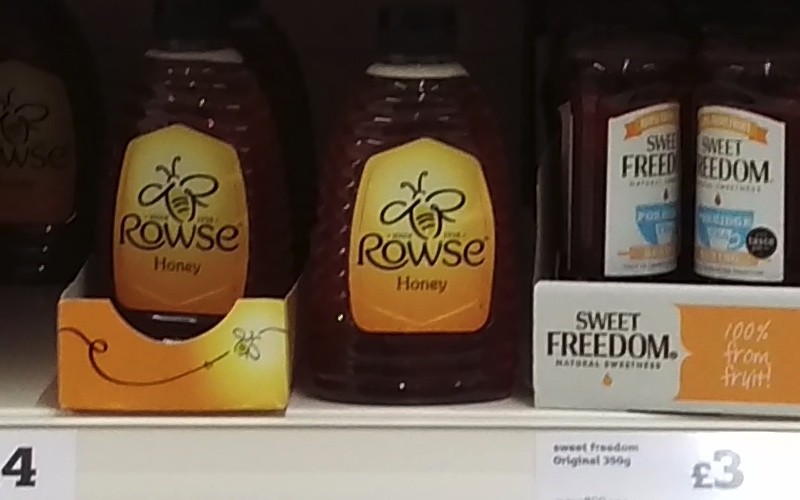
As the light levels reduce, the OIS in the Lumia 930 starts to come into its own, with an exposure that's twice as long (at 1/19s) and showing better colours and clarity across the board. Interestingly, the One M7 had a basic form of OIS, but HTC removed it for subsequent models for some reason.
Test 5: Low light, indoors
My standard low light scene, just a small table lamp. Here's the overall scene, for context:

In case you want to grab the original images to do your own analysis, here they are, from the Lumia 930 and HTC One M9, click the links to download. And here are detailed 1:1 crops, just wait to make sure the page has fully loaded and then use your mouse or trackpad pointer to compare the images:


Again the OIS and pro optics help the 930 use a longer exposure (1/10s) and crystal clear detail, though the DAB radio's wood is too orange for my liking. The One M9's camera does remarkably well with a 1/14s exposure, perhaps thanks to my practised hands and stable stance(!!) There are definitely more artefacts in the M9 image down at the pixel level, but it's really not that far off the PureView device and the colours are arguably more accurate, even lit by a 'warm' incandescent bulb.
Test 6: Night time
Around 60 metres from a supermarket entrance. Here's the overall scene, for context:

In case you want to grab the original images to do your own analysis, here they are, from the Lumia 930 and HTC One M9, click the links to download. And here are detailed 1:1 crops, just wait to make sure the page has fully loaded and then use your mouse or trackpad pointer to compare the images:


Again the OIS in the Lumia 930 camera does a great job, but the One M9's shot isn't too shabby either, especially considering how far we've cropped in here and still only just about able to see defects. Definitely a win for the longer and more stable exposure in the Nokia.
Verdict
Overall, as you picked up from my general comparison of the two devices, the camera hardware and software in the Lumia 930 definitely outguns the HTC One M9, but not by the massive gulf that you might expect (certainly after reading other M9 reviews).
One factor in the M9's favour for imaging in general is that its front facing camera is excellent, being the full 4MP 1/3" ultrapixel camera from the rear of its ancestors. Here's a crop from a selfie from each phone:
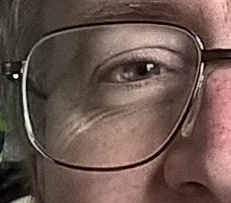
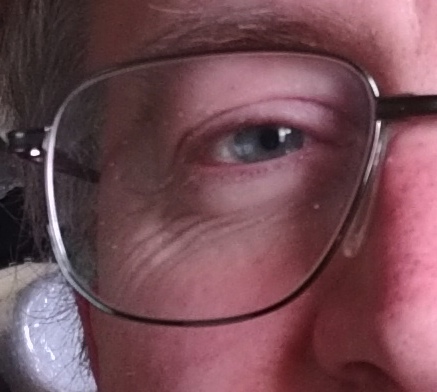
It seems as if HTC's ultrapixel camera has found its niche at last! I'd also give the edge to the 930 in terms of video, in terms of the OIS again, the quad HAAC microphones, and so on.
If there's a theme to my camera comparisons in the last few years it's that the (ex-)Nokia hardware keeps the likes of the Lumia 930, 1520 and 1020 ahead but that the competition are 'catching up'. This is also true here, though the One M9 doesn't get anywhere near as close as the OIS-stabilised Nexus 6 and Galaxy Note 4 (and the upcoming Galaxy S6, of course). Having said that, it's certainly not the imaging abomination that others have written about around the Web.
PS. The aforementioned Galaxy S6 is the point at which I expect non-Nokia phone cameras to fully catch up to the likes of the 930 and 1520, so I'll be testing that in due course. The (2013) 1020's a different proposition, of course, with the greater zoom, higher megapixels and Xenon flash. Will it keep the imaging crown in the phone world? Probably. Just!
